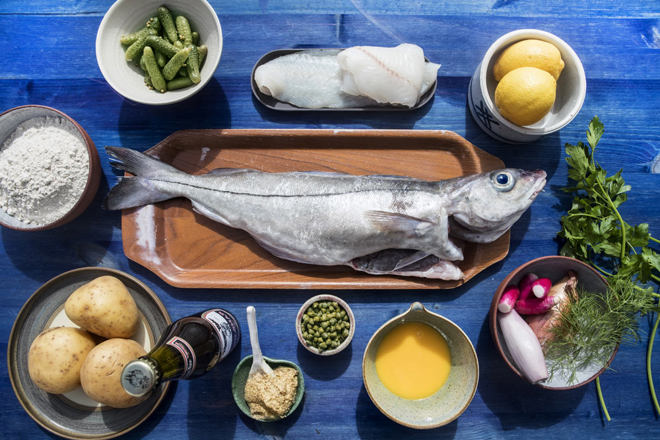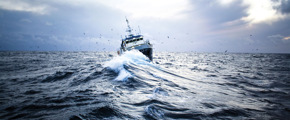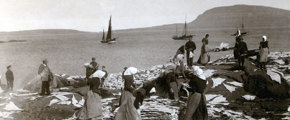Haddock
The Haddock can be recognised by the signature black mark on its side, which some refer to as the “devil’s thumbprint”. Its flesh is tender and has a mild and sweet taste, which makes haddock popular with fish and chips enthusiasts.
Haddock is a type of codfish with white, lean and flaky flesh. The flakes are finer than those of Atlantic cod, and unlike cod, the haddock has a thin layer of connective tissue covering the flesh. This makes it firmer and more tender than cod, with a sweeter taste. The tender, firm and consistent meat and the sweet taste make haddock many people’s first choice for fish and chips.
Haddock is rich in proteins and vitamin B, as well as many healthy minerals, such as selenium.
Haddock has a very versatile taste and can be prepared in many different ways. It can be fried, grilled, poached, baked and deep-fried. Smoked haddock is also extremely good. In the Faroe Islands, haddock and other fish are also wind-dried, and haddock is considered a delicacy for this special form of Faroese food preparation.
Devil's Thumbprint
Haddock has a distinctive dark stripe across the sides and black marks above the pectoral fins. These marks are sometimes referred to as the “devil’s thumbprint”.
According to the legend, the Devil wanted to replicate Jesus’ miracle of feeding the masses with just five loaves of bread and two fish. While Jesus used cod, the devil wanted to use Haddock, so he thrust his hand into the Atlantic Ocean and grabbed the Haddock. The Haddock managed to wriggle out of the Devil’s scaulding hot grasp, but not without injury. The black marks are said to be the thumbprint and marks of the Devil’s clutching hooves.

Try out the Faroese chef Gutti Winther’s delicious fish and chips recipe.
Biology
In the Faroe Islands Haddock is called Hýsa. Haddock (Melanogrammus aeglefinus) is a part of the codfish family. They are usually smaller than cod but can grow to over a meter in length. Haddock is darker on the top and lighter on the side and hasthree dorsal fins and two posterior fins.
Haddock is a demersal fish that mostly lives close to the seabed of the Atlantic Ocean among stones, gravel and sand. Haddock will, however, also float to the upper layers of the ocean to depths of between 10 and 300 meters. Haddock’s main sources of nutrition are different types of worms, crustaceans and quilled marine animals, but they will also eat other fish and molluscs.
Haddock prefer to swim in water that has a temperature between 4 and 10 degrees Celsius. It is found in both the western and eastern parts of the North Atlantic. In the Northwest Atlantic, haddock is primarily found around the Canadian and North American coast, from Newfoundland to Cape Hatteras. In the Northeast Atlantic, haddock is found around the Faroe Islands, Iceland, in the North Sea, the Norwegian Sea and the Baltic Sea.
The Faroese fish for Haddock using lines, trawls and jigging reels. While Faroese vessels mostly fish for haddock in Faroese waters, the Faroe Islands also have agreements to fish in other parts of the North Atlantic, including Iceland, Norway and the Barents Sea.





